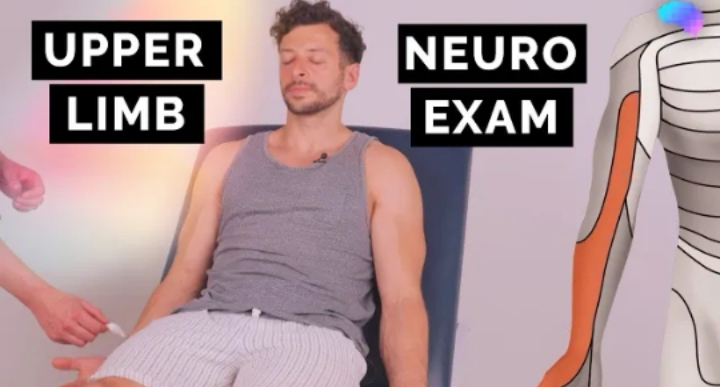How to Perform a Neurologic Assessment: Step-by-Step Guide
Hi, I’m Maris! In this article, I’ll walk you through how to perform a neurologic assessment, covering key tests like stereognosis, graphesthesia, and the Romberg test.
I'll be following along with our Health Assessment Flashcards, which you can find on our website at LevelUpRN.com. Prefer digital resources? Check out Flashables, the digital version of all our flashcards.
Let’s dive in!
Components of a Neurologic Assessment
Before we get into the specific tests, let’s quickly review what a comprehensive neurologic assessment includes:
- Observation of Gait
- Tandem Walk
- Romberg Test
- Coordination Tests (e.g., finger-to-nose, heel-to-shin)
- Sensory Testing (vibration, light touch, deep touch)
- Stereognosis & Graphesthesia
- Reflex Assessment
Now, let's break down each of these components.
1. Observing Gait
One of the first things I assess—often without even thinking about it—is gait. How does the patient walk?
- Do they walk upright with good balance?
- Or do they shuffle, stoop, or exhibit a festinating gait (small, rapid steps often seen in Parkinson’s disease)?
A patient’s gait can reveal a lot about their neurologic status.
2. Tandem Walk
Next, I have the patient perform a tandem walk, which might remind you of the field sobriety test used by police officers.
Here’s how it works:
- The patient walks in a straight line, heel-to-toe, placing the heel of one foot directly in front of the toes of the other.
- Watch for wobbling or if they need to reach for balance.
Difficulty with this task can indicate issues with balance or coordination.
3. Performing the Romberg Test
The Romberg test assesses the patient’s balance and proprioception—their awareness of their body’s position in space.
How to Perform the Romberg Test:
- Ask the patient to stand with their feet together (narrow base).
- Have them place their arms at their sides.
- Instruct them to close their eyes.
- Observe for 20 seconds.
What to Look For:
- Normal: Slight swaying is okay.
- Abnormal (Positive Romberg): If the patient falls, steps forward to catch themselves, or shows significant imbalance, this is a sign of impaired proprioception.
4. Testing Coordination
To assess coordination, I use simple tests that involve rapid, repetitive movements:
- Finger-to-Finger Test: Have the patient touch their finger to their nose, then to your finger, and repeat.
- Finger-to-Nose Test: Similar, but they move between their nose and their own finger.
- Heel-to-Shin Test: Ask the patient to slide the heel of one foot down the shin of the opposite leg.
These tests help identify issues with cerebellar function.
5. Sensory Testing
A full neurologic assessment includes checking the patient’s ability to perceive:
- Vibration: Using a tuning fork.
- Light Touch: With a cotton ball.
- Deep Touch: Using a blunt object to apply gentle pressure.
6. Assessing Stereognosis
Stereognosis tests the patient’s ability to recognize objects by touch, without seeing them.
How to Test Stereognosis:
- Ask the patient to close their eyes.
- Place a familiar object (like a coin, paperclip, or pen) in their hand.
- Ask them to identify the object.
Expected Result: They should be able to correctly name the object.
Abnormal Result: Inability to identify the object could indicate sensory or cortical impairment.
7. Assessing Graphesthesia
Graphesthesia evaluates the ability to recognize numbers or letters drawn on the skin using only the sense of touch.
How to Test Graphesthesia:
- Have the patient close their eyes and hold out their palm.
- Using a finger or blunt object, draw a simple number (like 4 or 8) on their palm.
- Ask them to identify the number.
Expected Result: The patient should correctly identify the number.
Abnormal Result: Difficulty recognizing the number may suggest issues with sensory processing.
Reflex Assessment
Deep Tendon Reflexes (DTR)
When assessing deep tendon reflexes, there are several common sites:
- Patellar Reflex: Tap below the kneecap with a reflex hammer; the leg should kick out.
- Brachioradialis Reflex: Tap the forearm near the wrist.
- Achilles Reflex: Tap the Achilles tendon and watch for a foot jerk.
Grading Reflexes
Reflex responses are graded on a scale from 0 to 4+:
- 0: No response (absent reflex)
- 1+: Diminished response
- 2+: Normal response
- 3+: Brisk response
- 4+: Hyperactive reflex, possibly with clonus (rhythmic, involuntary muscle contractions)
Example:
- A 2+ response is normal.
- A 4+ response, where the leg kicks out forcefully or shows clonus (common in the ankles), indicates hyperactivity and could point to neurological issues.
Final Thoughts
And that wraps up the key components of a neurologic assessment! By observing gait, testing balance and coordination, and assessing sensory function and reflexes, you’ll gain valuable insights into your patient’s neurologic health.
If you found this helpful, be sure to check out our Health Assessment Flashcards at LevelUpRN.com or try out Flashables for a digital experience.




Comments
Post a Comment